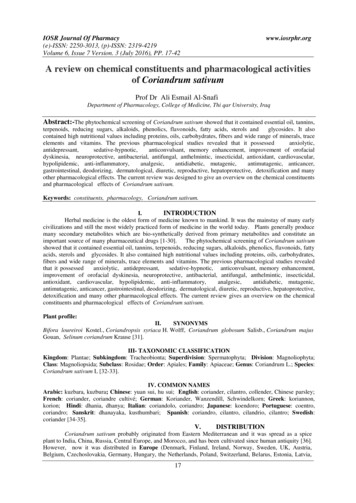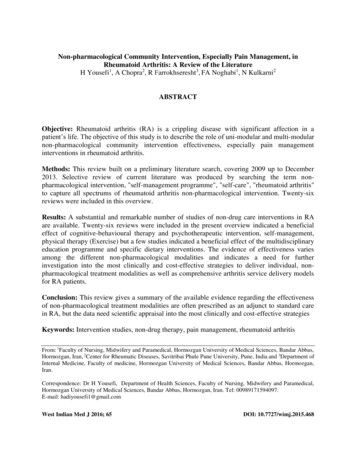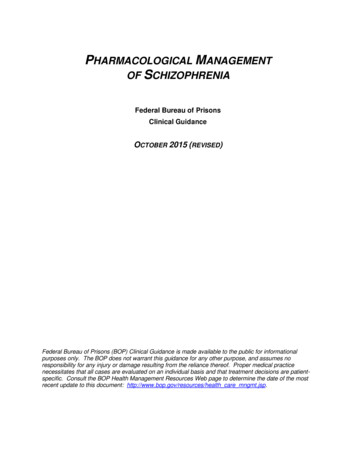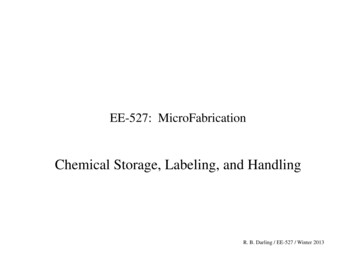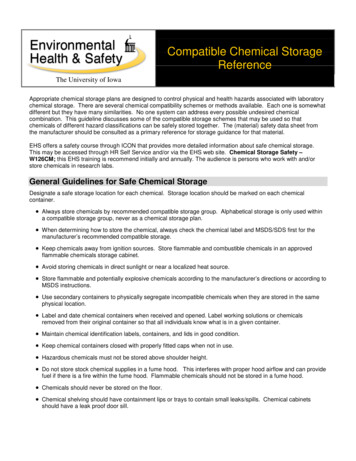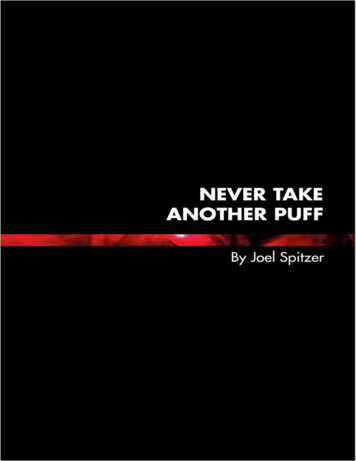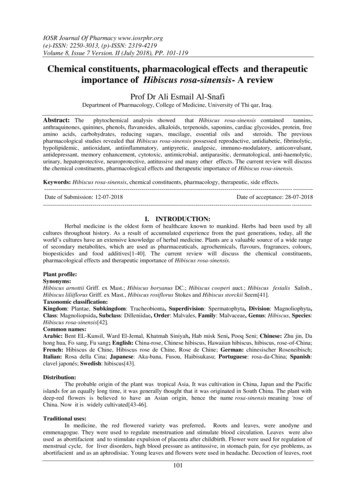
Transcription
IOSR Journal Of Pharmacy www.iosrphr.org(e)-ISSN: 2250-3013, (p)-ISSN: 2319-4219Volume 8, Issue 7 Version. II (July 2018), PP. 101-119Chemical constituents, pharmacological effects and therapeuticimportance of Hibiscus rosa-sinensis- A reviewProf Dr Ali Esmail Al-SnafiDepartment of Pharmacology, College of Medicine, University of Thi qar, Iraq.Abstract: Thephytochemical analysis showedthat Hibiscus rosa-sinensis containedtannins,anthraquinones, quinines, phenols, flavanoides, alkaloids, terpenoids, saponins, cardiac glycosides, protein, freeamino acids, carbohydrates, reducing sugars, mucilage, essential oils andsteroids. The previouspharmacological studies revealed that Hibiscus rosa-sinensis possessed reproductive, antidiabetic, fibrinolytic,hypolipidemic, antioxidant, antiinflammatory, antipyretic, analgesic, immuno-modulatory, anticonvulsant,antidepressant, memory enhancement, cytotoxic, antimicrobial, antiparasitic, dermatological, anti-haemolytic,urinary, hepatoprotective, neuroprotective, antitussive and many other effects. The current review will discussthe chemical constituents, pharmacological effects and therapeutic importance of Hibiscus rosa-sinensis.Keywords: Hibiscus rosa-sinensis, chemical constituents, pharmacology, therapeutic, side --------------------------------- ---------Date of Submission: 12-07-2018Date of acceptance: ----------------------------------- ----------I. INTRODUCTION:Herbal medicine is the oldest form of healthcare known to mankind. Herbs had been used by allcultures throughout history. As a result of accumulated experience from the past generations, today, all theworld’s cultures have an extensive knowledge of herbal medicine. Plants are a valuable source of a wide rangeof secondary metabolites, which are used as pharmaceuticals, agrochemicals, flavours, fragrances, colours,biopesticides and food additives[1-40]. The current review will discuss the chemical constituents,pharmacological effects and therapeutic importance of Hibiscus rosa-sinensis.Plant profile:Synonyms:Hibiscus arnottii Griff. ex Mast.; Hibiscus boryanus DC.; Hibiscus cooperi auct.; Hibiscus festalis Salisb.,Hibiscus liliiflorus Griff. ex Mast., Hibiscus rosiflorus Stokes and Hibiscus storckii Seem[41].Taxonomic classification:Kingdom: Plantae, Subkingdom: Tracheobionta, Superdivision: Spermatophyta, Division: Magnoliophyta,Class: Magnoliopsida, Subclass: Dilleniidae, Order: Malvales, Family: Malvaceae, Genus: Hibiscus, Species:Hibiscus rosa-sinensis[42].Common names:Arabic: Bent EL-Kunsil, Ward El-Jemal, Khatmah Siniyah, Hab misk Seni, Pooq Seni; Chinese: Zhu jin, Dahong hua, Fo sang, Fu sang; English: China-rose, Chinese hibiscus, Hawaiian hibiscus, hibiscus, rose-of-China;French: Hibiscus de Chine, Hibiscus rose de Chine, Rose de Chine; German: chinesischer Roseneibisch;Italian: Rosa della Cina; Japanese: Aka-bana, Fusou, Haibisukasu; Portuguese: rosa-da-China; Spanish:clavel japonés; Swedish: hibiscus[43].Distribution:The probable origin of the plant was tropical Asia, It was cultivation in China, Japan and the Pacificislands for an equally long time, it was generally thought that it was originated in South China. The plant withdeep-red flowers is believed to have an Asian origin, hence the name rosa-sinensis meaning 'rose ofChina. Now it is widely cultivated[43-46].Traditional uses:In medicine, the red flowered variety was preferred. Roots and leaves, were anodyne andemmenagogue. They were used to regulate menstruation and stimulate blood circulation. Leaves were alsoused as abortifacient and to stimulate expulsion of placenta after childbirth. Flower were used for regulation ofmenstrual cycle, for liver disorders, high blood pressure as antitussive, in stomach pain, for eye problems, asabortifacient and as an aphrodisiac. Young leaves and flowers were used in headache. Decoction of leaves, root101
Chemical constituents, pharmacological effects and therapeutic importance of Hibiscus rosa-.and fruits were helpful in treatments of arthritis, boils and coughs. Fruits were employed externally in cases ofsprains, wounds and ulcers[47-50].The leaves of Hibiscus rosa-sinensis were used for the treatment of dysentery and diarrhea, to promotedraining of abscesses and as analgesic in the traditional medicine of Cook Islands, Haiti, Japan and Mexico[51].Flowers of the plant were used in diabetes, epilepsy, bronchial catarrh and leprosy[52-53]. The flowers havebeen reported in the ancient Indian medicinal literature with beneficial effects in heart diseases. They wererefrigerant, emollient, demulcent, aphrodisiac and emmenagogue. Petals were used to stimulate thicker hairgrowth and to prevent premature graying, hair loss and scalp disorders. It considered as a natural emollient hairconditioner and was used in hair washes, treatments and vinegar rinses for the hair[54-55].Parts used: Whole plant[9].Physicochemical characteristics:The physicochemical parameters of the root extract: loss on drying 0.53%; ash values: total ash 7.75%, acidinsoluble ash 0.75% and water soluble ash 6.32%); extractive values (chloroform soluble extractive 2.80%,water soluble extractive 5.30%, carbinol soluble extractive 15.60%, ethanol soluble extractive 2.60% andpetroleum ether soluble extractive 1.45%) and swelling Index 2.5%[56].Chemical constituents:The preliminary phytochemical analysis showed that Hibiscus rosa-sinensis contained tannins,anthraquinones, quinines, phenols, flavanoides, alkaloids, terpenoids, saponins, cardiac glycosides, protein, freeamino acids, carbohydrates, reducing sugars, mucilage, essential oils and steroids[57-61].Hibiscus rosa-sinensis contained cyclopropanoids, methyl sterculate, methyl-2-hydroxy sterculate, 2hydroxysterculate, malvalate and beta-sitosterol. The major anthocyanin in the flower was cyanidin 3sophoroside[62].Quantitative phytochemical evaluation of the flowers of Hibiscus rosa-sinensis revealed that theamount of flavonoids was 0.171 mg/g, total phenolics 0.092 mg/g, tannins 0.073 mg/g, carbohydrates 0.356mg/g, protein 0.247 mg/g, thiamine 0.072 mg/g, niacin 0.075 mg/g, ascorbic acid 0.0339 mg/g, riboflavin 0.087mg/g, calcium 0.0127%, phosphorus 0.4113% and iron 0.771%[63].The flower extract of Hibiscus rosa-sinensis (Red) contained 0.678 0.14% phenols, 0.51 0.16 %alkaloids and 7.5 0.20 % tannins. While , the flower extract of Hibiscus rosa-sinensis (White) contained0.680 0.11% phenols, 0.50 0.18 % alkaloids and 8.9 0.21 % tannins, and the flower extract of Hibiscusrosa-sinensis (Yellow) contained 0.678 0.16% phenols, 0.48 0.16 % alkaloids and 8.5 0.20% tannins[64].Total phenolic contents of leaves and flowers of Hibiscus rosa-sinensis were: 301 21 and 735 46mg gallic acid equivalent /100g respectively, ascorbic acid equivalent antioxidant capacity (AEAC) of theleaves and flowers were 96 35 and 640 56 mg ascorbic acid /100g respectively, total anthocyanin content(TAC) in the flowers was 284 17 mg cyanidin-3-glucoside equivalent/100g, and ferric-reducing power(FRP) of flowers was 4.0 0.3 mg gallic acid equivalent /100g[65].The flowers contained four types of flavonoids, rutin, quercetin, kaempferol and myricetin, theircontents in methanol extract were 4104.0, 7.6, 361.9 and 50.7 μg/g respectively[66].The flowers also contained substantial quantities of proanthocyanidins and anthocyanins[67]. Manycompounds were isolated from the flowers included cyclopeptide alkaloids, vitamins, thiamine, riboflavin,niacin and ascorbic acid[68-69]. Crushed red and magenta flower varities yield dark-purplish dye, anthocyaninpigment and cyandin diglucoside, while many flavanoids and cyanidin compounds (quercetin-3-diglucoside,quercetin 3,7-diglucoside, kaempferol-3-xylosyglucoside,cyanidin- 3,5 -diglucoside and cyanidin-3sophoroside-5-gIucoside) were isolated from other varieties [70-71].Fresh flowers of Hibiscus rosa-sinensis gave 0.30 - 0.50 v/w % essential oils. Many constituents wereidentified in the essential oils included: 1 - iodoundecane: 50.568%, neopentane: 7.641%, 2, 2, 4-trimethyl 3pentanone: 1.556%, 1,2-benzenedicarboxylicacid isodecyl octyl ester: 11.056%, 2-cyclopentylethanol: 2.404%,2-propeonic acid, 1-4 butanediyl ester: 1.543%, 2-propenamide: 1.543%, 1-tetrazol-2-ylethanone: 3.993%, 4trifluoroacetoxyoctane: 1.480% and amylnitrite: 3.993%[72].Methanol and ethanol extract of Hibiscus rosa-sinensis showed total phenolics 61.45 3.23 and 59.31 4.31 mg/100g as gallic acid equivalent, total flavonoids 53.28 1.93 and 32.25 1.21 mg/100g as catechineequivalent, respectively[73].The extracted mucilage was slightly soluble in water and a dispersion of it yielded a brown, slimysolution and it was practically insoluble in ethanol, acetone and chloroform. A 1% w/v suspension of Hibiscusmucilage in water gave a pH of 6.5. Mucilage of Hibiscus rosa-sinensis contained L‐rhamnose, D‐galactose,D‐galactouronic acid, and D‐glucuronic acid[74-76].The metals in decoction of Hibiscus rosa- sinensis leaves were determined by atomic absorptionspectrophotometer, they were included: Sodium 129.6 - 344.2, Potassium 612.9 - 787.2, Calcium 748.3 -102
Chemical constituents, pharmacological effects and therapeutic importance of Hibiscus rosa-.907.5, Magnesium 574.8 - 877.9, Iron 1.16 - 2.53, Zinc 1.32 - 1.92, Cobalt 1.25 - 1.68, Manganese 0.147 0.188, Chromium 0.142 - 0.164, Nickel 0.244 - 0.496, Copper 0.107 - 0.129, Lead 0.087 - 0.122, Cadmium0.058 - 0.064, Barium 1.67 - 2.45 and Aluminum 0.299 - 0.472 mg/100g[77]. 8-Nonynoic and 9-decynoic acidsand their methyl esters were isolated from stem bark [78]. Carotene and taraxeryl acetate and p-sitosterol wereisolated from leaves and stem bark of the plant[79].Pharmacological effects:Reproductive effects:The benzene chloroform and alcoholic extracts of the flowers of Hibiscus rosa sinesis decreased thespermatogenic elements of testis, and epididymal sperm count, when administered (ip) at two different doselevels (125 and 250 mg/kg bw) to adult male albino mice for 20 days. High content of testicular cholesterol maybe due to lowered androgen synthesis[80].The effect of ethanol, chloroform, ethyl acetate extract of Hibiscus rosa sinunsis was studied onspermatogenesis and sperm parameters on mice. Administration (Sc) of 125mg/kg bw of ethanol, chloroformand ethyl acetate extract for three consequence days caused marked to significant decrease in testis weight andsperm count and sperm viability[81].The effects of oral administration of aqueous and alcoholic extracts of flowers of Hibiscus rosasinensis (250 mg/kg bw/day, for 30 days) on the reproductive organs of male rats were studied. The resultsindicated that the weights of the testis, epididymis, ventral prostate, and seminal vesicle of the treated animalswere not significantly different from those of the controls. The testis and epididymis of the rats also showednormal histological features, irrespective of treatment. No apparent toxicity of the extracts was discernible[82].The benzene chloroform and alcoholic extracts of the flowers of Hibiscus rosa-sinensis (125 and 250mg/kg ip) in mice for 20 days decreased the spermatogenic elements of testis and epididymal sperm count. Italso markedly increased the content of testicular cholesterol which may be occurred due to lowered androgensynthesis. The increase in the weight of accessory reproductive organs indicated the androgenicity of the plantextract[80].The effect of orally administered aqueous crude extract of Hibiscus rosa-sinensis (500 mg/kg bw) onreproductive organ was studied in mice. The treatment caused reduction in the weight of testis, epididymis andsperm density significantly. Serum testosterone level was declined, the fall in density of sperms and that oftestosterone level were correlated to one another. Histologically, testis in mice treated with the plant extractshowed alteration in the seminiferous tubules included decrease in thickness and density of germinal epitheliumand hypertrophy in majority of cells, the lumen showed negligible presence of sperms in the treated animal ascompared to control[83].The effect of Hibiscus rosa-sinensis on the estrous cycle and reproductive organs was studied infemale albino rats. The benzene extract of the flowers disrupted the estrous cycle. Treatment for 30 daysresulted in a significant (P 0.05) reduction in the weight of the ovaries, uterus, and pituitary gland.Histologically, ovarian follicular atresia and uterine atrophy were observed. Treatment resulted in degranulatedgonadotrophs in the pituitary, the effect was dose-dependent[84].The benzene extract of Hibiscus rosa-sinensis flowers administered intraperitoneally at the dose levelsof 125 and 250 mg/kg bw to adult female mice, resulted in an irregular estrous cycle with prolonged estrus andmetestrus. An increase in the atretic follicles and the absence of corpora lutea indicated the antiovulatory effectof the extract. The extract also showed estrogenic activity in immature mice by early opening of the vagina,premature cornification of the vaginal epithelium and an increase in uterine weight[85].Ethanolic extracts (50%), as well the benzene extracts, of Hibiscus rosa-sinensis reduced significantlythe glycogen contents in the uterus of adult rat, dose dependently. Benzene extract seemed more potent. Theseeffects were due to antiestrogenic nature of the extracts[86].The postcoital antifertility properties of benzene hot extracts of Hibiscus rosa-sinensis flowers,leaves, and stem barks, were investigated in female rats. Only extracts from the flowers of the plant were 100%prevented pregnancy. The flowers collected during the winter showed the greatest potency, followed by thosecollected in the spring, rainy season, and summer, in decreasing order[87].Benzene extract of Hibiscus rosa-sinensis flowers, administered during day 1-4 of gestation, exertedanti-implantation effect without affecting the tubal transport of zygote. On day 4, normal number of blastocystwas present in the uterus, but they did not implant. However, hyper-permeability of the endometrial capillarieswhich is the earliest known response of a receptive endometrium to any kind of deciduogenic stimulus wasinhibited by the extract. Ovarian structure exhibited signs of luteolysis. Inadequate progestational developmentof the endometrium due to interference with the conditioning of the uterus with progesterone during prenidatoryphase of pregnancy was suggested as the plausible cause of the extract-induced implantation failure[88].103
Chemical constituents, pharmacological effects and therapeutic importance of Hibiscus rosa-.The antifertility and estrogenic activity of ethanolic extract of the roots of Hibiscus rosa-sinensis wasinvestigated. A strong anti-implantation (inhibition 100%) and uterotropic activity was observed at the doselevel of 400 mg/kg bw. Histological findings gave further documentation to the results[89].The benzene extract of Hibiscus rosa-senensis flowers was administered at four different dose levels(250-1000 mg/kg bw/day) from day 1-4 postcoitus in mice. Anti-implantation response and associated changesin the uterine chemical composition were studied. With an increase in the dosage of the extract, the percentageof implantation failure increased. At the dose level of 1 gm/kg bw, the extract led to failure of implantation in93% of the mice. The effect was accompanied by adversely altered uterine weight, its protein content andalkaline and acid phosphatase activity. The effect of the extract on uterine uptake of progesterone was studied inbilaterally ovariectomized mice treated with or without estrogen. The extract exerted neither inhibitory norstimulatory on uterine progesterone uptake in untreated castrated mice but the estrogen-induced increase in theuptake level was significantly inhibited by the extract[90].The antiimplantation activity of water extract of leaves of Hibiscus rosa-sinensis was investigated inmice. Pregnant female mice were administered with extract (100 mg/kg bw) from days 1 to 6 of pregnancy. Noimplantation sites were observed in day 15 of pregnancy. Biochemical and biophysical alterations wereobserved in the endometrium in treated animals, especially on day 5, at 4:40 a.m., the day of implantation. Asharp increase in superoxide anion radical and a sharp fall in superoxide dismutase (SOD) activity were causedby the extract, the extract also exhibited antiestrogenic activity, as judged by increase in uterine weight[91].Oral administration of the benzene extract of Hibiscus rosa-sinensis flowers at a dose level of 1 gm/kgbw/day from day 5-8 of gestation caused termination of pregnancy in about 92% of female mice. The effectwas associated with a significant fall in peripheral level of progesterone and increase in uterine acidphosphatase activity, as measured on day 10. The ovary exhibited signs of luteolysis, and the corpus luteal delta5-3 beta -hydroxysteroid dehydrogenase activity decreased markedly. The interceptive effect of the extract wasprevented completely by exogenous progesterone (1mg/ mouse/ day) or chorionic gonadotropin (1 IU/ mouse/day) and partially (62.5%) by exogenous prolactin (500 micrograms/mouse/day). The extract caused resorptionof the fetuses accompanied by reduction in weight of the ovaries[92].The effect of aqueous extract of Hibiscus rosa-sinensis flowers was investigated in maternal-fetaloutcome in pregnant rats with diabetes. The non-diabetic treated group showed decreased high densitylipoprotein cholesterol, increased atherogenic index (AI) and coronary artery risk index (CRI), and increasedpreimplantation loss rate compared to the non-diabetic group. Although treatment with Hibiscus rosa-sinensisshowed deleterious effects on cardiac and reproductive functions, the diabetic treated group showed increasedmaternal and fetal weights, reduced AI and CRI, and reduced preimplantation loss rate compared to theuntreated diabetic group[93].The effect of aqueous extract of Hibiscus rosa-sinensis flowers (100 mg/kg from day 0 to 7 ofpregnancy, 200 mg/kg from day 8 to 14 and 400 mg/kg from day 15 to 20) was investigated on biochemicalparameters and oxidative stress in diabetic and non-diabetic pregnant rats. After treatment with Hibiscus rosasinensis extract, non-diabetic and diabetic rats showed no glycemic changes. The treatment with Hibiscus rosasinensis in diabetic group was able to decrease the triglycerides and ALT levels compared to diabetic nontreated animals[94].Antidiabetic and hypolipidemic effects:The antidiabetic effect of ethyl acetate fraction of Hibiscus rosa-sinensis petals (EHRS) was evaluatedin experimental diabetes at a dose of 25 mg/kg bw and compared with metformin. The elevated levels of serumglucose (398.56 35.78) and glycated haemoglobin (12.89 1.89) in diabetic rats were significantly decreased(156.89 14.45 and 6.12 0.49, respectively) by (EHRS) administration. Hepatotoxicity marker enzyme levelsin serum were normalized, the glycogen content was restored by regulating the activities of glycogenmetabolizing enzymes. It significantly modulated the expressions of marker genes involved in glucosehomeostasis signalling pathway. Histopathological analysis of liver and pancreas supported the biochemicalfindings[95].The anti-diabetic effects of aqueous ethanolic extract of Hibiscus rosa-sinensis was investigated instreptozotocin-induced diabetic rats. Oral administration of Hibiscus rosa-sinensis (500 mg/kg) aqueous extractto diabetic rats for 4 weeks significantly reduced blood glucose, urea, uric acid and creatinine but increased theactivities of insulin, C-peptide, albumin, albumin/globulin ratio and restored all marker enzymesto nearcontrol levels. Accordingly, Hibiscus rosa-sinensis extract has an antihyperglycaemic effect and alleviatedliver and renal damage associated with streptozotocin-induced diabetes mellitus in rats[96].The hypoglycemic activity of the ethanol extract of Hibiscus rosa-sinensis was studied in rats. After asingle dose of the extract, a slight but insignificant hypoglycemic effect was observed at 30 and 90 min, at 120min it was mild but significant. After repeated administration of the extract (once a day for seven consecutivedays) a statistically significant (P 0.001) reduction in blood glucose levels was observed at 30, 90 and 120 min104
Chemical constituents, pharmacological effects and therapeutic importance of Hibiscus rosa-.after glucose loading. The average hypoglycemic activity, after repeated administration of 250 mg/kg leafextract was 81%, under similar conditions, the average activity of tolbutamide was 96%. At 250 mg/kg, theefficacy of the extract was found to be 84% of tolbutamide (100 mg/kg). Repeated treatment of animals eitherwith tolbutamide a sulphonylurea or Hibiscus rosa-sinensis caused a 2-3-fold improvement in glucose toleranceas compared to those receiving only once[97].The antidiabetic effect of Hibiscus rosa-sinensis flower powder was studied in type II diabetic patients.2g flower powder of Hibiscus rosa-sinensis, daily for 60 day significantly decrease level, mean fasting bloodglucose, post prandial blood glucose level, mean glycosylated Hb level, mean total cholesterol, triglyceridelevel, total LDL and total VLDL cholesterol level[53].Because fraction-3 (F3) and fraction-5 (F5) were more effective fractions among 5 fractions obtainedfrom the ethanolic extract of Hibiscus rosa-sinensis leaves, they were used to study their anti-diabeticproperties in non obese diabetic mice. Serum glucose, glycosylated hemoglobin, triglyceride, cholesterol, bloodurea, insulin, LDL, VLDL, and HDL were estimated. Both fractions F3 and F5 (100 and 200 mg/kg bw)demonstrated insulinotropic nature and protective effect in non obese diabetic mice[98].The hypolipidimic activity of flowers extract of Hibiscus rosa-sinensis was studied in alloxan induceddiabetic rats. Oral administration of flowers extract in doses 50,100 and 200 mg/kg po, showed significantimprovement in dyslipidemia caused by diabetes mellitus as evidenced by reduced level of total cholesterol,triglycerides, VLDL, LDL and elevated in HDL levels significantly[99].The effect of ethanolic extract of Hibiscus rosa-sinensis (EHBS) leaves on alloxan-induced diabeteswith dyslipidemia was studied in rats. Treatment of alloxan-induced diabetic rats with 2.0 mg/kg bw ofEHBS for 1 week significantly reduced glucose level, TC, TG and LDL-C, and increased HDL-C and weightof kidney, pancreas and liver compared with diabetic rats. A similar results were obtained when the treatmentof alloxan-induced diabetic rats continued for 4 weeks. EHBS leaves extracts, in comparison with metformin,possessed profound hypoglycemic and hypolipidemic activities[100].The antidiabetic, hypolipidimic, antioxidant and histopathological effects of Hibiscus rosa-sinensiswere investigated in alloxan induced diabetes in rats. HEFHR (hydroalcoholic extract of flower of Hibiscusrosa-sinensis, 50-200 mg/kg bw) possessed significant and sustained antidiabetic activity, comparable with thehypoglycemic effect of glibenclamide and sulphonylurea. Flower extract of HRS was more efficacious in lipidlowering effect and in antioxidative activity than glibenclamide. After 28 day treatment with flower extract, sizeof islets was significantly increased and necrosis and atrophy of islets were significantly improved; alsoincrease in number and diameter of cell islets compared to the diabetic group[101].Blood glucose and total lipid levels were determined in streptozotocin induced diabetic rats after oraladministration of an ethanol flower extract of Hibiscus rosa-sinensis. Ethanol flower extract possessedhypoglycemic effect after 7 and 21 days of oral administration of the extract. Maximal diminution in bloodglucose (41-46%) was noticed after 21 days. The extract lowered the total cholesterol and serum triglyceridesby 22 and 30%, respectively. HDL-cholesterol was much higher increased (12%) by the extract compared toglibenclamide (1%). The hypoglycemic activity of this extract was comparable to that of glibenclamide but wasnot mediated through insulin release[102].The hypolipidemic activity of Hibiscus rosa-sinensis root extract was studied in triton and cholesterolrich high fat diet (HFD) induced models of hyperlipidemia in rats. Root extract (500 mg/kg bw/ day orally),possessed lipid-lowering effect , as assessed by reversal of plasma levels of total cholesterol (TC),phospholipids (PL) and triglycerides (TG) and reactivation of post-heparin lipolytic activity (PHLA) of plasmain triton model. The root extract (500 mg/kg bw/ day orally) for 30 days also lowered the lipid levels in plasmaand liver homogenate and reactivation of plasma PHLA and hepatic total lipoprotein lipase activity incholesterol-rich high fat diet model[103].Cytotoxic effect:Hibiscus rosa-sinensis extract possessed a protective effect against the tumour promotion stage ofcancer development. The ameliorative potential of Hibiscus rosa-sinensis extract was investigated inhyperproliferation and oxidative damage caused by benzoyl peroxide and ultraviolet radiations in mouse skin.Pretreatment with Hibiscus rosa-sinensis extract (3.5 mg and 7 mg/ kg bw) partly restored the levels of cellularprotective enzymes (P 0.05). Besides, malondialdehyde formation and hydrogen peroxide content (P 0.05)were statistically significantly reduced at both doses. The ornithine decarboxylase activity and thymidineincorporation in DNA were also reduced, dose dependently (P 0.05) by the plant extract[104].The role of gentisic acid in the chemopreventive activity of Hibiscus rosa-sinensis extract was studiedin 7,12-dimethyl benz(a)anthracene (DMBA)/croton oil-mediated carcinogenesis in mouse skin via 12-Otetradecanoyl phorbol-13-acetate (TPA)-induced tumour promotion response and oxidative stress. Applicationof Hibiscus rosa-sinensis extract 30 minutes prior to the application of croton oil twice weekly for 20 weekscaused significant reduction in the number of tumours per mouse and the percentage of tumour-bearing mice.105
Chemical constituents, pharmacological effects and therapeutic importance of Hibiscus rosa-.The latency period for the appearance of the first tumour was delayed on Hibiscus rosa-sinensis pretreatment.Pretreatment of Hibiscus rosa-sinensis extract (3.5 mg and 7 mg/kg bw) and gentisic acid (2.0 microg and 4.0microg/0.2 ml acetone per animal) restored the levels of GSH, and its metabolizing and antioxidant enzymes(P 0.05). There was also a statistically significant reduction in MDA formation and H 2O2 content (P 0.05) atboth doses. The authors postulated that gentisic acid has a role in the modulatory activity of Hibiscus rosasinensis extract[105].The in vitro cytotoxic activity of the crude petroleum ether, ethyl acetate and methanol extracts of theleaf and stem of Hibiscus rosa-sinensis (20 - 100 μg/ml) was evaluated against leukaemic cancer cell line (K562). The methanol leaf extracts showed higher activity (IC 50 value: 30.9 1.1 μg/ml) against K-562 cells thanpetroleum ether and ethyl acetate extracts which exhibited IC 50 of 87.6 0.91 and 57.6 0.61 μg/ml (P 0.05),respectively. Meanwhile, stem methanol extracts showed IC50 of 79.80 μg/ml against K-562. The methanolextracts produced cell death on K-562 cells by apoptosis[106].The cytotoxic activity of aqueous and chloroform extracts of flowers of Hibuscus rosa-sinensis wasinvestigated against MCF-7 cell lines using MTT assay. Extracts possessed marked % inhibition of cellviability against MCF-7 cell lines in dose dependent manner. The mean IC50 values of chloroform extract was46.1 2.816% and 61.88 0.662%, and aqueous extract 42.91 0.104% and 56.29 0.083% at concentration of100 and 200 μg/ml respectively[107].The aqueous extracts of Hibiscus rosa-sinesis flowers inhibited melanoma cell growth in a dosedependent manner at concentrations that did not affect the growth of nontransformed cells. In addition, theseextracts contained low molecular weight growth inhibitory compounds below 3 kD in size[108].Antimicrobial effect:The antibacterial activity of Hibiscus rosa-sinensis flower extract was studied against humanpathogens. The results showed that the cold extract possessed a maximum zone of inhibition against Bacillussubtillis and Escherichia coli (17.00 2.91 and 14.50 1.71) mm respectively, followed by hot extractionagainst, E. coli and Salmonella sp. (11.66 3.14 and 10.60 3.09) mm respectively. Methanol extract showeda highest zone of inhibition against B. subtillis and E. coli (18.86 0.18 and 18.00 1.63) mm respectively,while ethanol extract showed utmost zone of inhibition against Salmonella sp. at (20.40 1.54) mm. Thecrude protein from flower showed a maximum inhibitory zone against Salmonella sp. and E. coli (16.55 1.16and14.30 2.86) mm respectively[109].The methanol, chloroform, n-hexane and aqueous extracts of Hibiscus rosa-sinensis (25, 50 and 100mg/ml) showed antibacterial activity against Staphylococcus epidermidis (11-23mm), Bacillus subtilis (1326mm) and Escherichia coli (12-24mm). The extracts also possessed antifungal activity against C albicans (12-20 mm), A flavus (10-17mm) and C glabreta (0-19mm). It appeared that the methanolic extract was themost potent antibacterial and antifungal extract, its diameters of inhibition for the concentration of 100, 50 and25 mg/ml were 20-26mm against Bacillus subtilis, 17-24mm against Escherichia coli, 19-23mm againstStaphylococcus epidermidis, 15-19mm against C glabreta, 14-17 mm against A flavus and 15-20 mm againstC albicans[110].The crude petroleum ether extract, ethyl acetate extract and methanol extract from the leaves, stemsand flowers of the plant were tested at concentrations rangi
Fresh flowers of Hibiscus rosa-sinensis gave 0.30 - 0.50 v/w % essential oils. Many constituents were Many constituents were identified in the essential oils included: 1 - iodoundecane: 50.568%, neopentane: 7.641%, 2, 2, 4-trimethyl 3-
